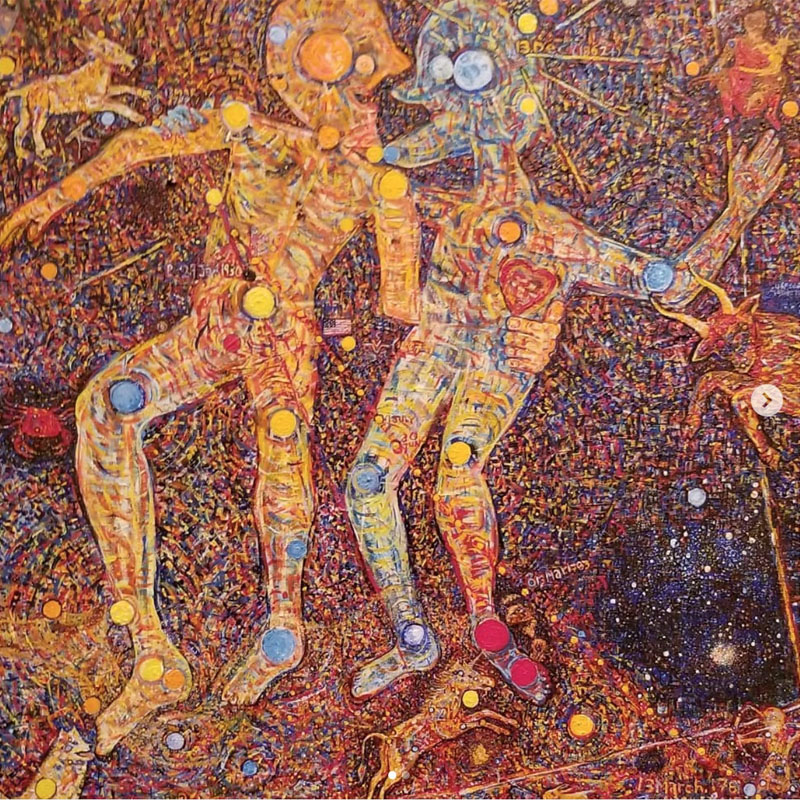
- On 13 March, 1781, while William Herschel was surveying the sky for probable double stars (which orbit each other), with his 40 foot telescope, then the largest in the world, he noted an object he could resolve to a disc, and, after some inquiry, it was established to be a planet, now known as Uranus. Interestingly, it had likely been *seen* before, over the centuries, but because it orbits so slowly (84 years) everyone thought it was a star. The scene of the discovery is the subject of this skyscape. The principal scene here is Gemini, where Uranus was that night (a handspan “up and left” from the readily-findable evening constellation Orion (also depicted here, along with the other neighboring constellations, in minature, though in celestial globe view)). Uranus is now in Pisces, and will return to this approximate location in 2033, only its third orbit since discovery.
